Vegan Globetrotter is supported by our audience. When you purchase through one of our links, we may earn a small affiliate commission. As an Amazon Associate I earn from qualifying purchases. Your cost is not affected.
==================
Tofu is a versatile plant-based food traditionally made from soybeans, water, and a coagulant. Soy milk, derived from soaked and ground soybeans, is combined with a coagulant to form curds that are then pressed into the familiar blocks of tofu. The type of coagulant used can influence both the texture and the nutritional content of the tofu. Common coagulants include calcium sulfate, which can enhance the calcium content, or magnesium chloride, also known as nigari, which can affect the magnesium content.
What Is Tofu Made From: Unveiling the Source of This Versatile Plant-Based Protein
The simplicity and benefits of tofu and its ingredients outweigh the variety of its forms, ranging from silky and soft to firm and extra firm, tailored to different culinary applications. The protein-rich nature of tofu and its ability to absorb flavors make it a staple in many vegetarian and vegan diets. Tofu’s history stretches back over 2,000 years, originating in China, and it has since spread to various cuisines worldwide, evidencing its adaptability and popularity.
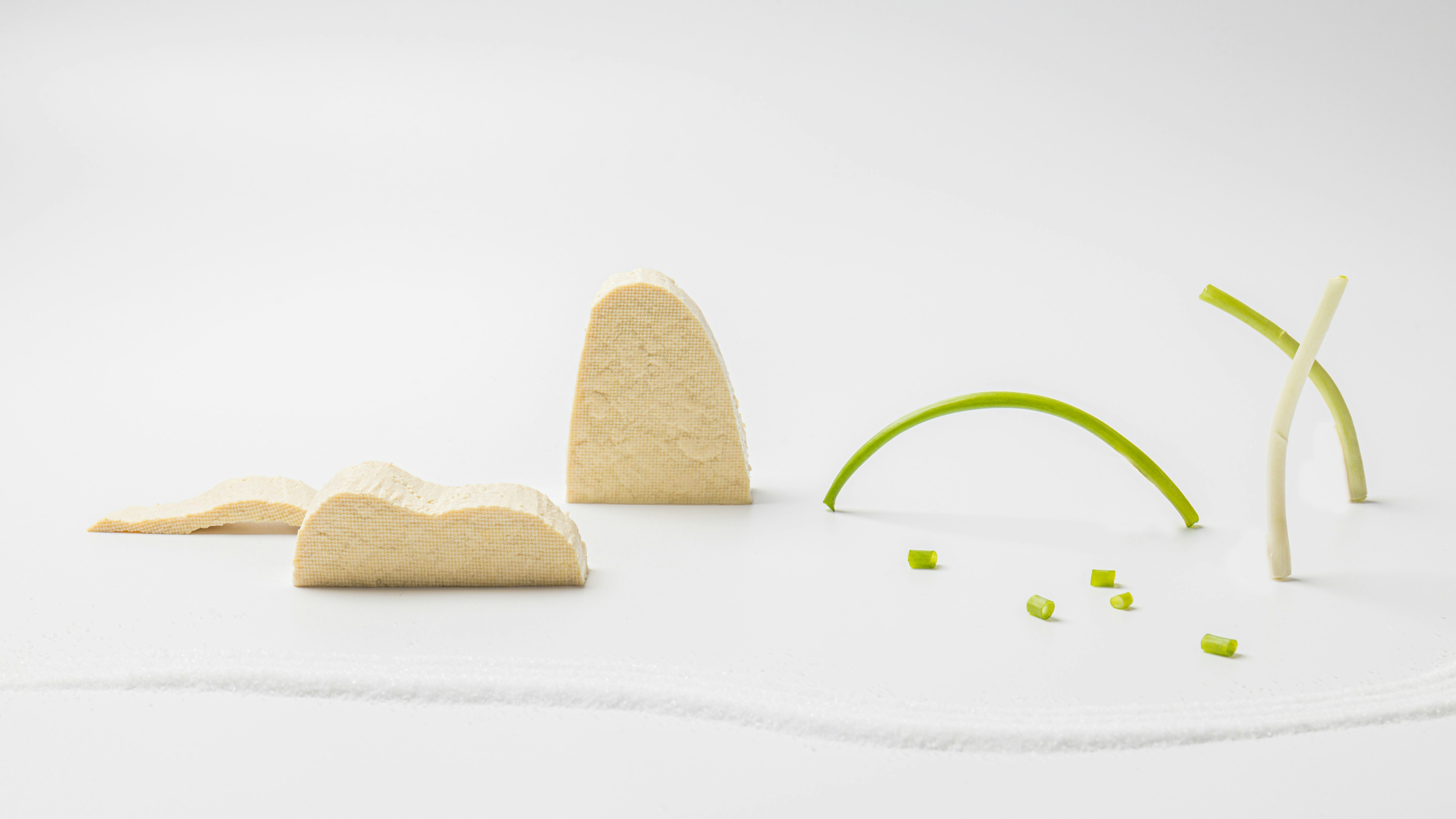
Key Takeaways
- Tofu is made from soy milk and a coagulant pressed into blocks.
- Coagulants in tofu affect its texture and nutritional content.
- Tofu has a longstanding history and is a mainstay in diverse cuisines.
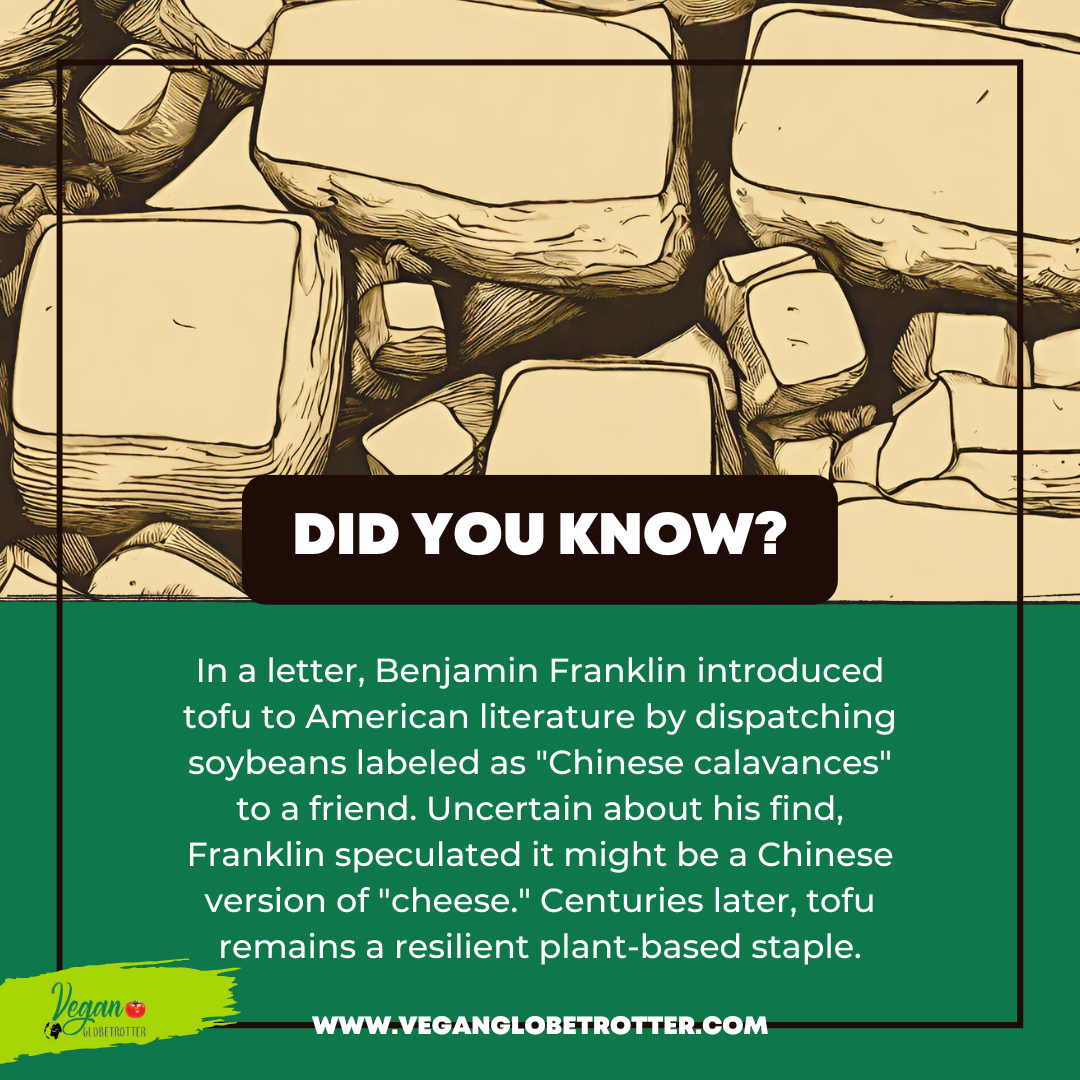
Origins of Tofu
The inception of tofu is deeply rooted in ancient Chinese history, with its production and consumption tracing back over two millennia. As tofu’s popularity spread, it became a staple in various Asian cuisines.
Historical Background
It is widely accepted that tofu originated in China during the Han Dynasty. A popular account attributes its invention to Liu An, a Han Dynasty prince, although definitive historical records are scarce. Making this food begins with the humble soybean, which is ground into a slurry, coagulated, and pressed into blocks. Tofu has since been a significant source of protein, particularly in vegetarian diets.
Geographical Spread
From its beginnings in China, tofu began its geographical journey, reaching neighboring countries such as Japan and Korea, and later on Southeast Asia. Tofu’s presence in Japan was established by the 8th century AD. With the rise of health-conscious movements in the 1960s, the health benefits of this food eventually garnered attention and acceptance in the Western world, where it has been integrated into various culinary practices.

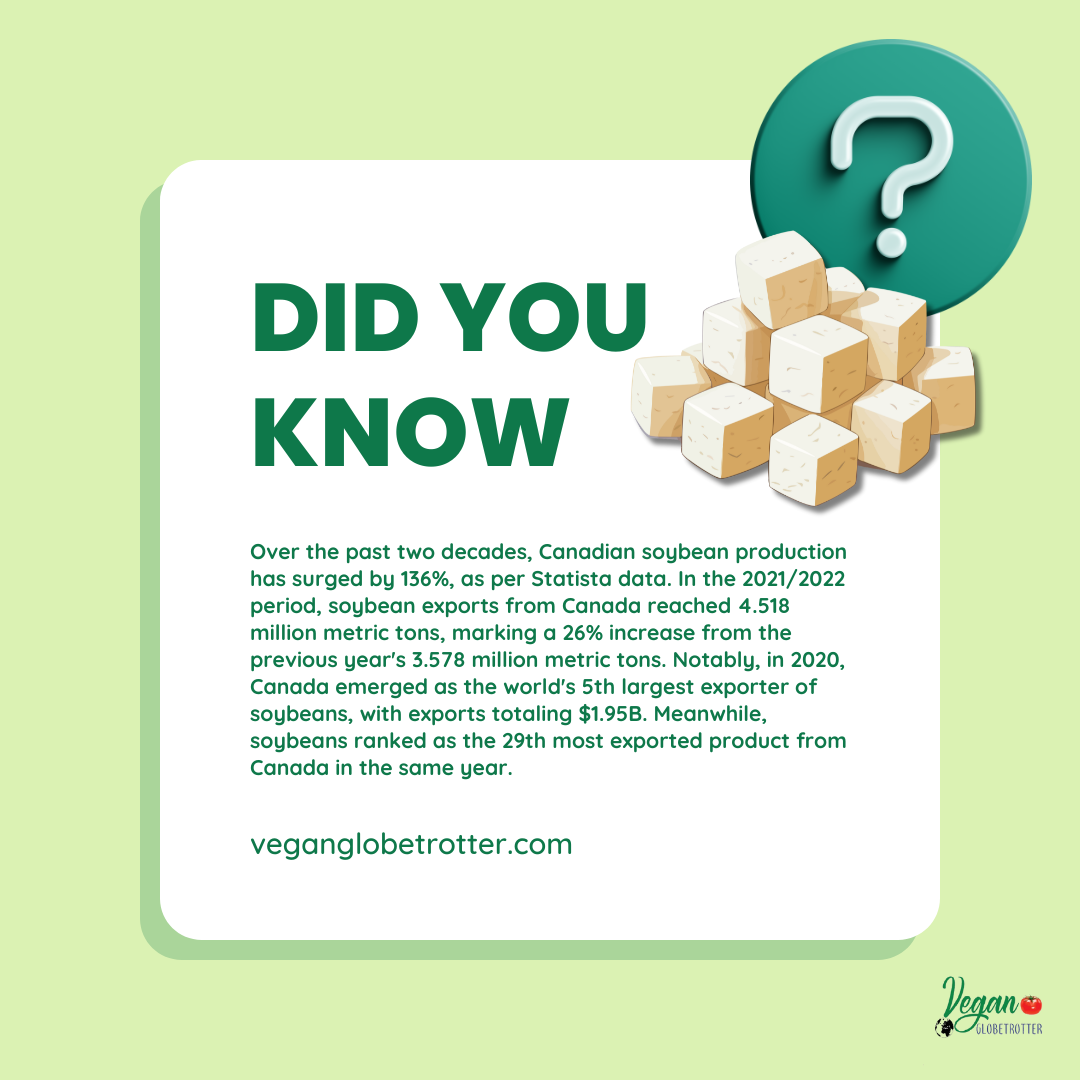
Tofu Ingredients
Tofu is a versatile food crafted from soybeans and coagulating agents, with its quality and characteristics influenced by the specific types of soy food each component uses.
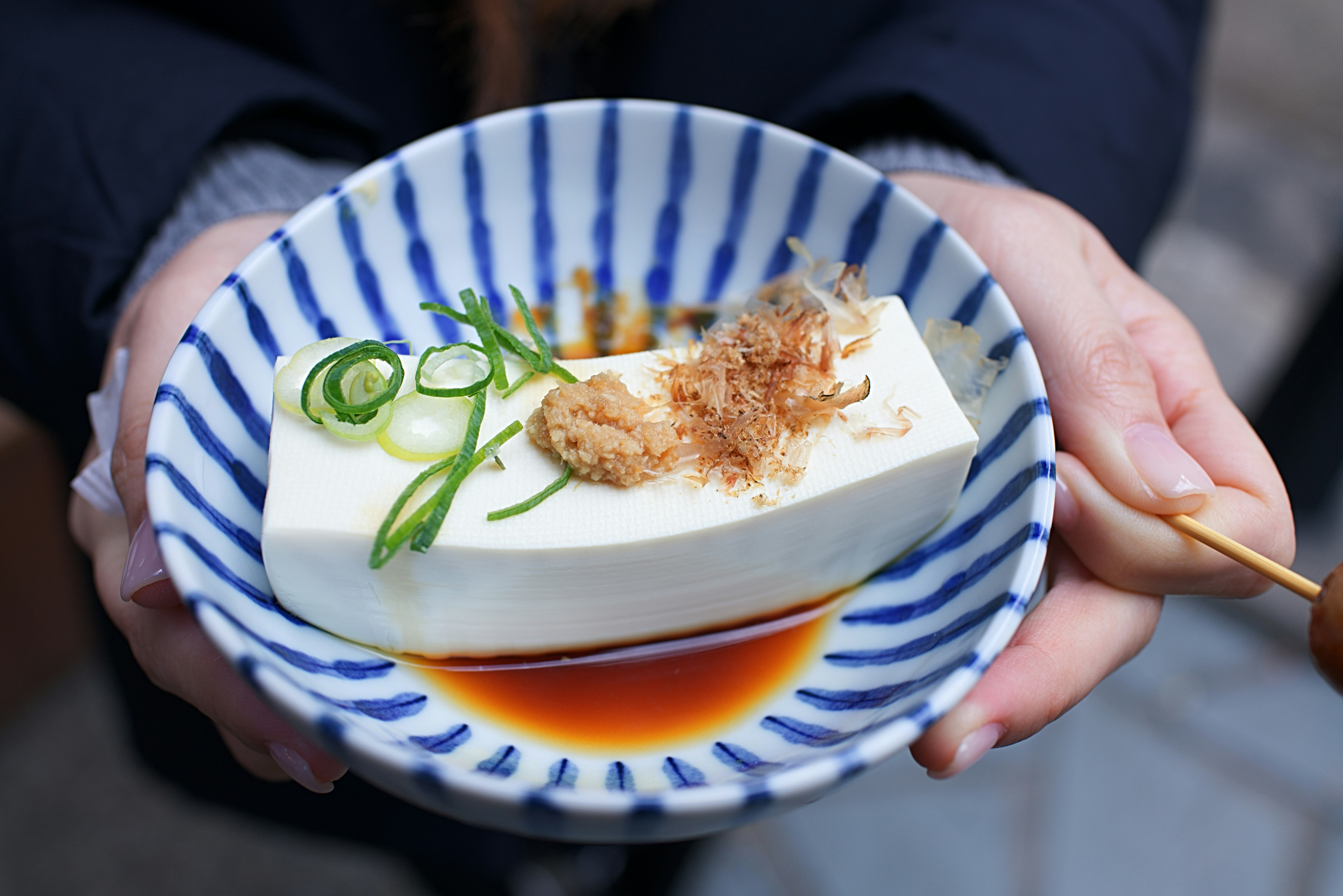
Soybeans
The primary ingredient in tofu is soybeans. These beans are soaked, ground, and then mixed with water to produce soy milk. Quality bean curd is often made from non-GMO and organic soybeans to cater to health-conscious consumers.
Coagulating Agents
Coagulating agents are crucial for transforming soy milk into bean curd. Two common coagulants are nigari (magnesium chloride) and gypsum (calcium sulfate).
These substances act to separate the soy milk into curds and whey, similar to cheese production. The choice of coagulant can affect both the texture and nutritional profile of this food.
Production Process
The creation of tofu is a meticulous process that transforms soybeans into the versatile, protein-rich food known as bean curd. Each step is crucial to ensure the final product has the desired taste, texture, and nutritional quality.
Soybean Selection
Selecting the right soybeans is the first step in the production of tofu. Typically, yellow soybeans are preferred due to their high protein content and better yield of this food. The soybeans are carefully chosen for quality to ensure this food will have a smooth texture and a clean taste.
Soaking and Grinding
Once selected, the soybeans are soaked in water to soften and then ground with water to produce a slurry. This soaking period is vital as it influences both the yield eating soy and the quality of the soy milk that will be extracted in the subsequent steps.
Separating Soy Milk
The soybean slurry is then separated into liquid soy milk and okara, the fibrous pulp residue. The separation is achieved through filtration, ensuring that only the smooth soy milk is used in the next stage of tofu production.
Coagulation
The soy milk must be coagulated to form curds, akin to the cheese-making process. Coagulants like magnesium chloride (nigari) or calcium sulfate (gypsum) are added to the soy milk, inducing the separation of curds from the whey.
Pressing and Shaping
Lastly, the curds are pressed into molds to expel excess liquid, which firm up the soft tofu within. The duration and weight of the pressing process determine the final texture of this food, ranging from soft to extra firm. Once pressed, the tofu cakes are shaped, cut, and packaged for distribution.
Types of Tofu
Globally used, tofu is a versatile plant-based product distinguished by its varying levels of firmness, each suited for different culinary purposes.
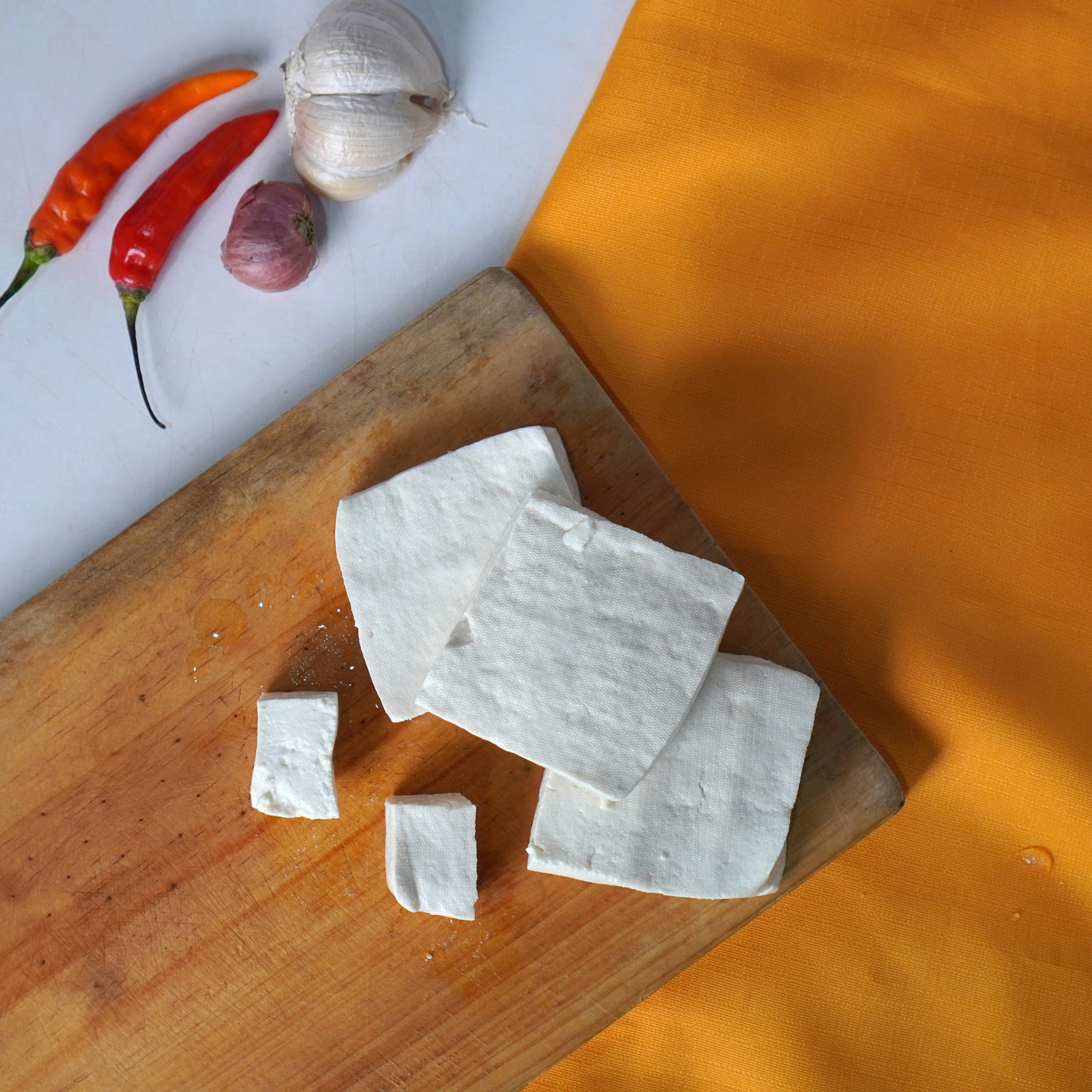
Silken
Silken tofu, characterized by its creamy, custard-like texture, is ideal for blending into smoothies, desserts, and sauces. Its delicate nature makes it suitable as a dairy substitute in vegan recipes, offering a smooth consistency.
Firm
Firm tofu holds its shape well and is, therefore, excellent for stir-frying, baking, or grilling. It has a denser texture and absorbs flavors from marinades or cooking sauces, making it a popular choice in savory dishes.
Extra-Firm
Extra-firm tofu is the most dense and solid type, holding up exceptionally well in high-heat cooking methods such as frying or griddling. Its low moisture content allows it to develop a satisfying, chewy exterior when cooked.
Processed Varieties
Processed tofu varieties include seasoned, smoked, or marinated tofus, designed to add a complex flavor profile to dishes. They often come pre-cooked, making them a convenient protein source for quick meals.
Nutritional Profile
Tofu is renowned for its rich nutritional content, serving as an excellent source of protein and providing a beneficial balance of macronutrients and various vitamins and minerals. This makes it a valuable addition to many diets.
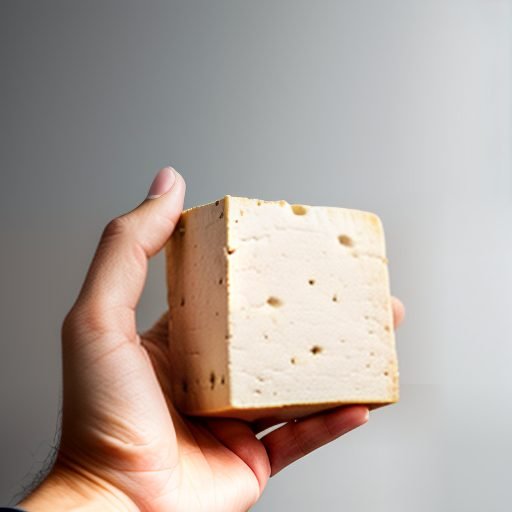
Macronutrients
Tofu provides a high-quality protein content with all nine essential amino acids, making it a complete protein source. The protein content varies by firmness, with firmer types providing more protein. For example, a 100-gram serving of firm tofu typically contains around 8 to 15 grams of protein.
In terms of fats, tofu is low in saturated fat and contains some beneficial unsaturated fats. A serving normally has around 5 grams of fat, combining polyunsaturated and monounsaturated fats.
Carbohydrates in this food are minimal, generally around 1 to 2 grams per 100 grams, most of which is from dietary fiber. This low carbohydrate level makes this food an attractive option for low-carbohydrate diets.
Vitamins and Minerals
Tofu is an important source of various minerals, such as calcium and iron. When coagulated using calcium salt, this food stands out for its notable calcium content, reaching up to 350 milligrams per 100 grams.
In terms of vitamins, tofu contains vitamin B1 (thiamine), vitamin B2 (riboflavin), vitamin B3 (niacin), and vitamin B6. It is also a source of magnesium, crucial for many bodily functions, and phosphorus, key for healthy bones and teeth.
Culinary Uses
Tofu’s versatility makes it a staple in traditional Asian dishes and an adaptable ingredient in Western cuisine. It absorbs flavors well, making it ideal for a wide range of recipes.
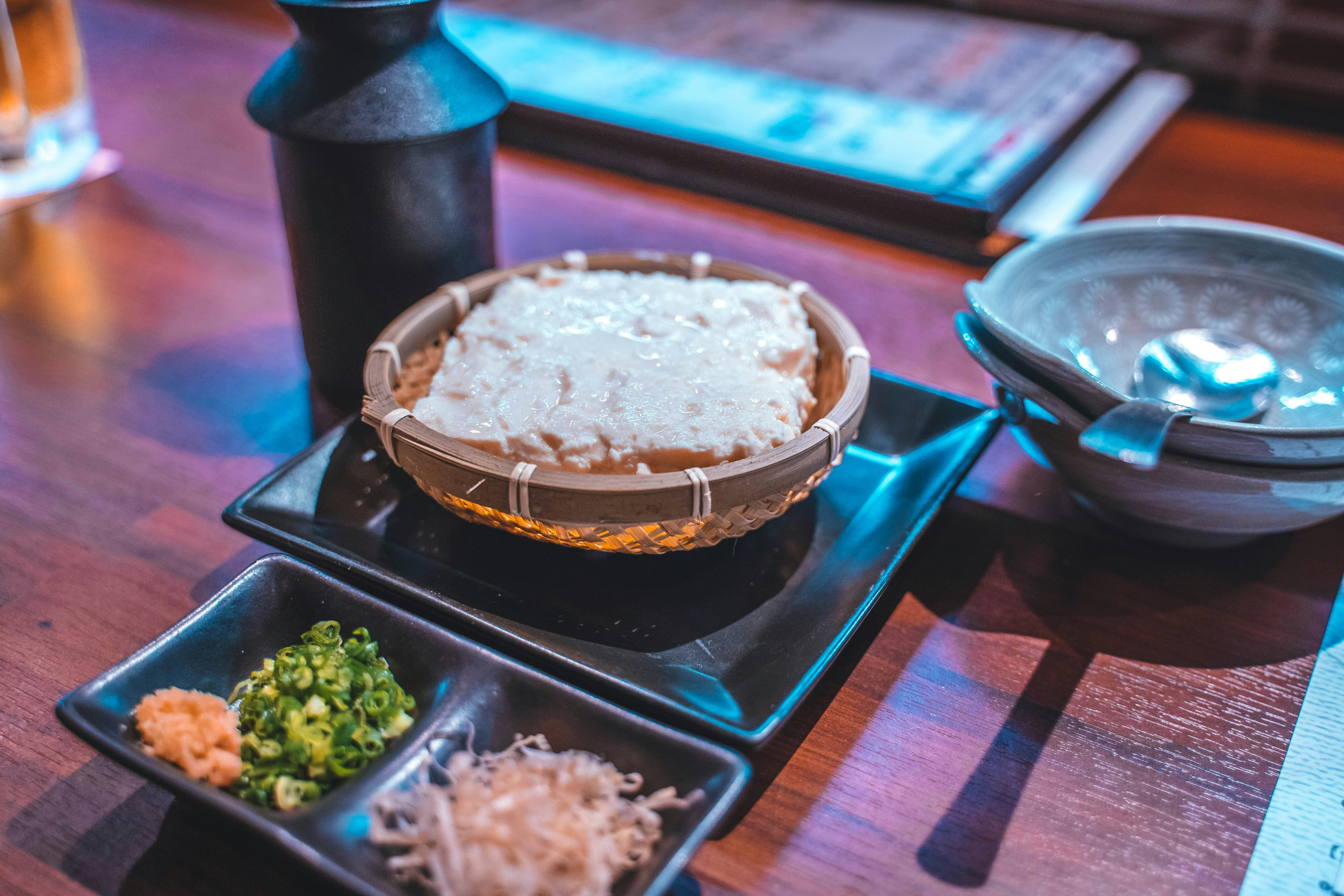
Traditional Asian Cuisine
In Asian cuisine, tofu is a crucial ingredient. People commonly stir-fry, steam, or incorporate it into soups. Mapo tofu, a spicy Sichuan dish, uses a soft variety of this food blended with ground meat and bean paste.
In Japanese kitchens, this food stars in miso soup—silken tofu cubes paired with seaweed and green onions in a savory broth. Other preparations include:
- Serve cold dishes by pairing tofu with soy sauce and toppings, such as sliced green onions.
- Hot pots, with tofu absorbing the flavorful broths.
Western Adaptations
Western chefs have embraced tofu for its nutritional and health benefits, and adaptability. Tofu can replace or complement proteins in various diets, especially in vegan and vegetarian recipes. It can be:
- Baked or grilled to produce a meat-like texture.
- Blended into smoothies or desserts for a protein boost without altering flavor.
- Crumbled as a substitute for cottage cheese or scrambled eggs.
Due to its texture, this food allows for marination, creating a foundation for dishes such as vegan stir-fries or sandwiches. Firmer ones are suitable for grilling and sautéing, while softer ones find common use in creamy sauces and desserts, based on the variations in firmness.
Storage and Preservation
When storing tofu, the primary goal is to maintain its freshness, bone health, and quality for as long as possible. Here are key methods to ensure proper storage and preservation:
- In the Fridge: You should keep Tofu inside the refrigerator. If unopened, maintain it in its original packaging. Once opened, submerge it in water and store it in an airtight container; change the water daily to keep it fresh.
- Freezing: For longer storage, freezing this food is an option. It will alter the texture, making it firmer and chewier, suitable for certain recipes. First, drain and press the tofu, then cut it into slices or cubes and freeze it in a single layer before transferring it to an airtight container.
- After Cooking: Store tofu in the fridge for up to one week, ensuring it’s cool and kept in a closed container.
Always check the expiration date of unopened tofu and adhere to its shelf life. Proper storage techniques will help prevent spoilage and maintain tofu’s nutritional quality. Remember, once opened, this food needs a little more care to keep it in the best condition for use in your favored dishes.
Wrapping It Up
Prebiotics play a vital role in gut health. They feed good bacteria, aiding digestion and well-being. Include foods like bananas, garlic, and onions in your diet.

In conclusion, incorporating tofu into your diet can offer various health benefits. This food provides all essential amino acids, making it a rich source of high-quality plant-based protein. Its versatility allows use in many recipes, making it a valuable addition to any vegan’s diet.
FAQs
How Do People Traditionally Prepare this Food?
Tofu’s traditional preparation involves coagulating soy milk and then pressing the resulting curds into soft white blocks. It can be silken, firm, or extra firm, depending on the pressing time and the amount of coagulant used.
What Are the Nutritional Benefits and Drawbacks?
Tofu is rich in protein and contains all nine essential amino acids. It’s also a good source of iron, calcium, and other minerals. However, some brands make genetically modified soybeans, and it is an allergen for some individuals.
Can Tofu Be a Suitable Part of a Weight Loss Diet?
Tofu can be a beneficial addition to a weight loss diet as it is low in calories but high in protein, which can promote satiety. Its versatility allows tofu in various dishes.
How Does Tofu Compare to Paneer in Terms of Health and Usage?
Tofu is lower in calories and fat than paneer, making it a preferable choice for those monitoring their intake. You can use both in cooking, but paneer has a richer taste and a firmer texture.
Is Tofu a Good Source of Protein for Vegans?
Tofu is an excellent source of protein for vegans because it contains all the essential amino acids needed for human health. It’s also versatile, easily absorbing flavors from other ingredients in vegan recipes.
What Are the Potential Effects of Tofu on Men's Health?
Moderate soy and tofu consumption may benefit men’s heart health by reducing the risk of heart disease. Despite concerns about soy’s phytoestrogens affecting male hormone levels, studies have not confirmed significant adverse effects.
Discover the awesome world of VeganGlobetrotter!
We’ve got cool stuff on different social media apps. Check out tasty recipes and travel tips on Instagram. Talk about interesting things and make friends on Twitter. Watch fun videos and learn cool stuff on YouTube. Hang out with us on Facebook for a friendly community and cool ideas. It doesn’t matter if you’re new to being vegan or you’ve been doing it for a while.
VeganGlobetrotter’s social media has something for everyone who likes yummy food and cares about the planet. Follow us on all the apps for a super fun and easy way to be vegan! 🌱✈️ #VeganGlobetrotter #YummyVeganLife



Don't miss out
when new recipes and information are added!
Join our newsletter for free recipes,
healthy living inspiration, and special offers
You have Successfully Subscribed!